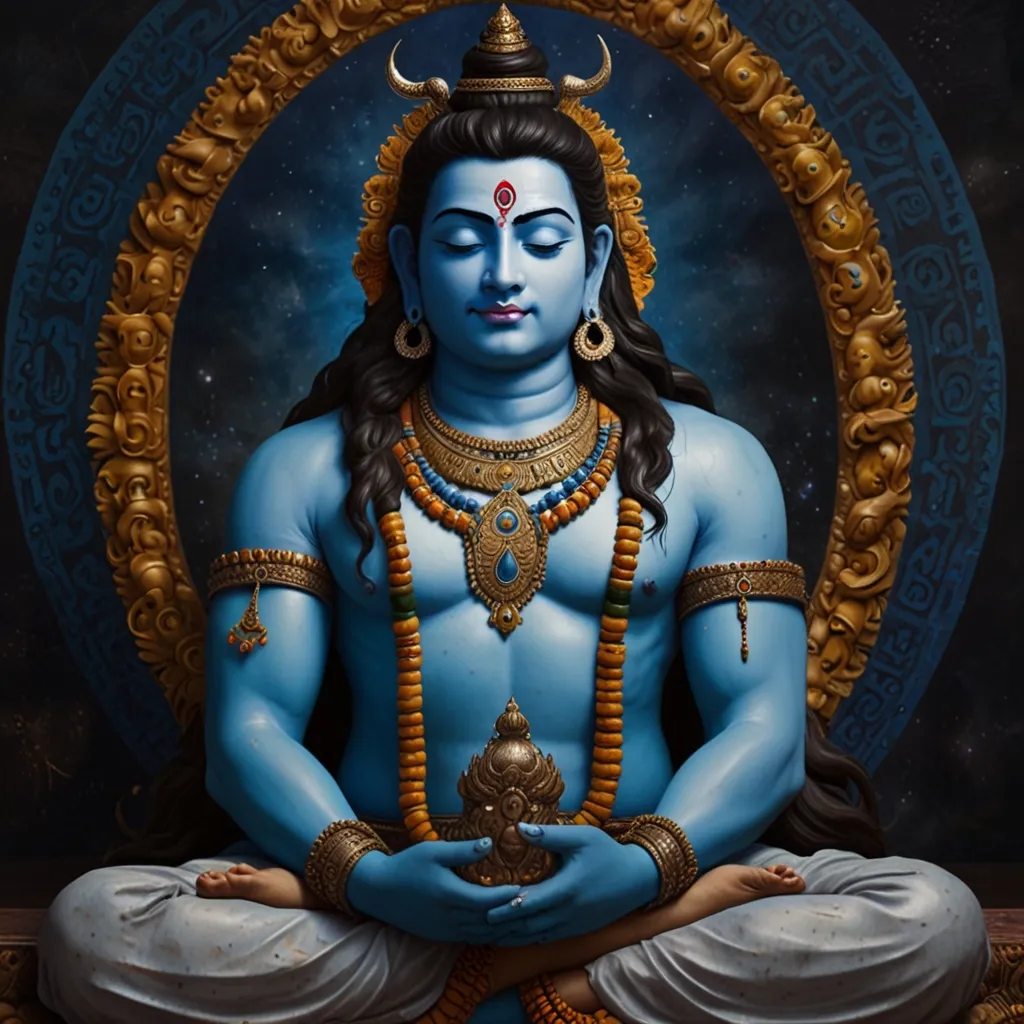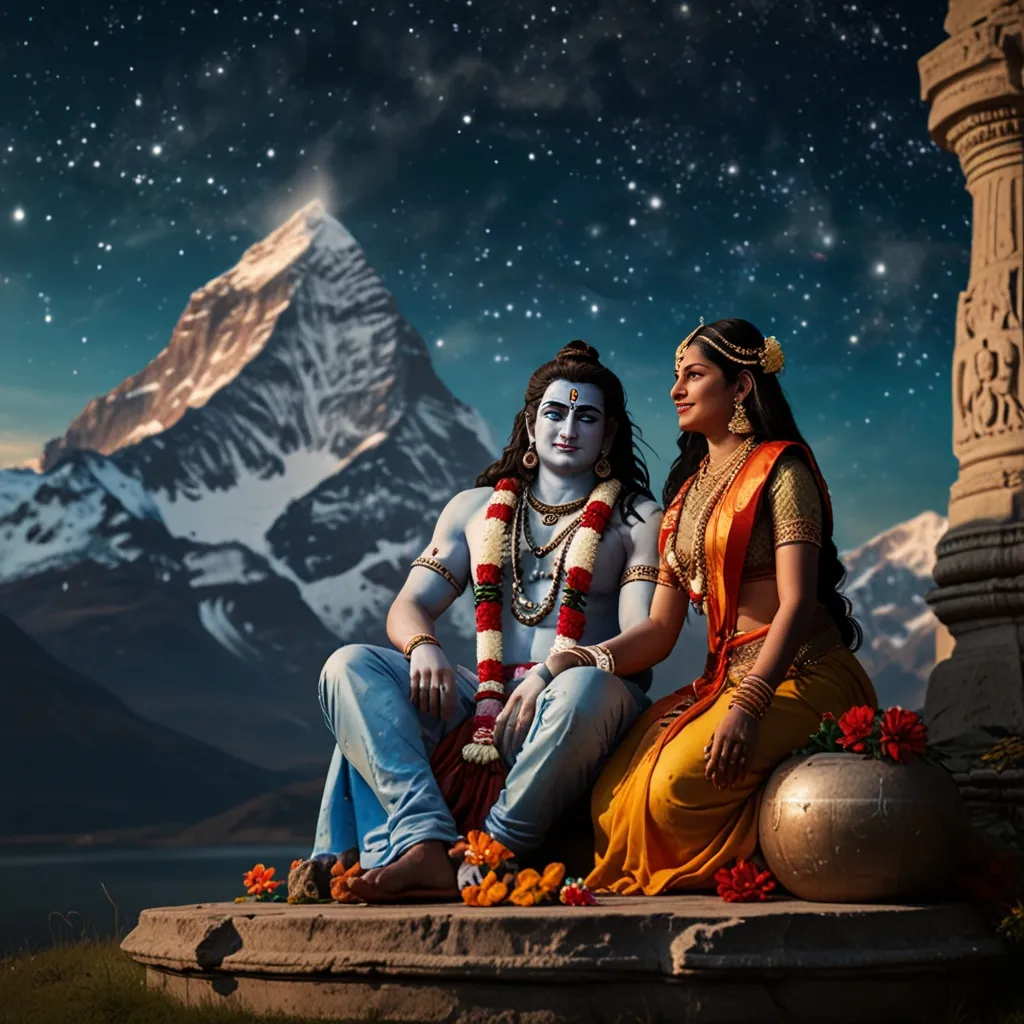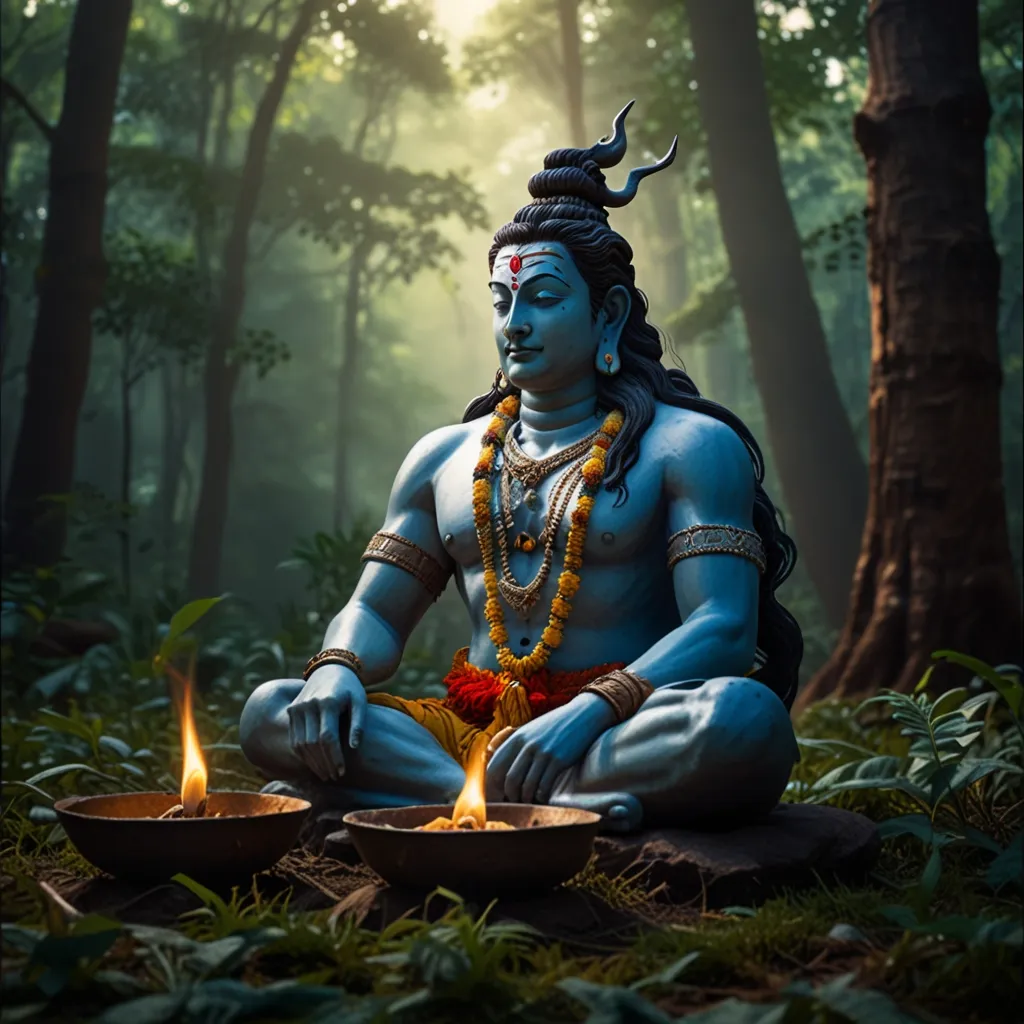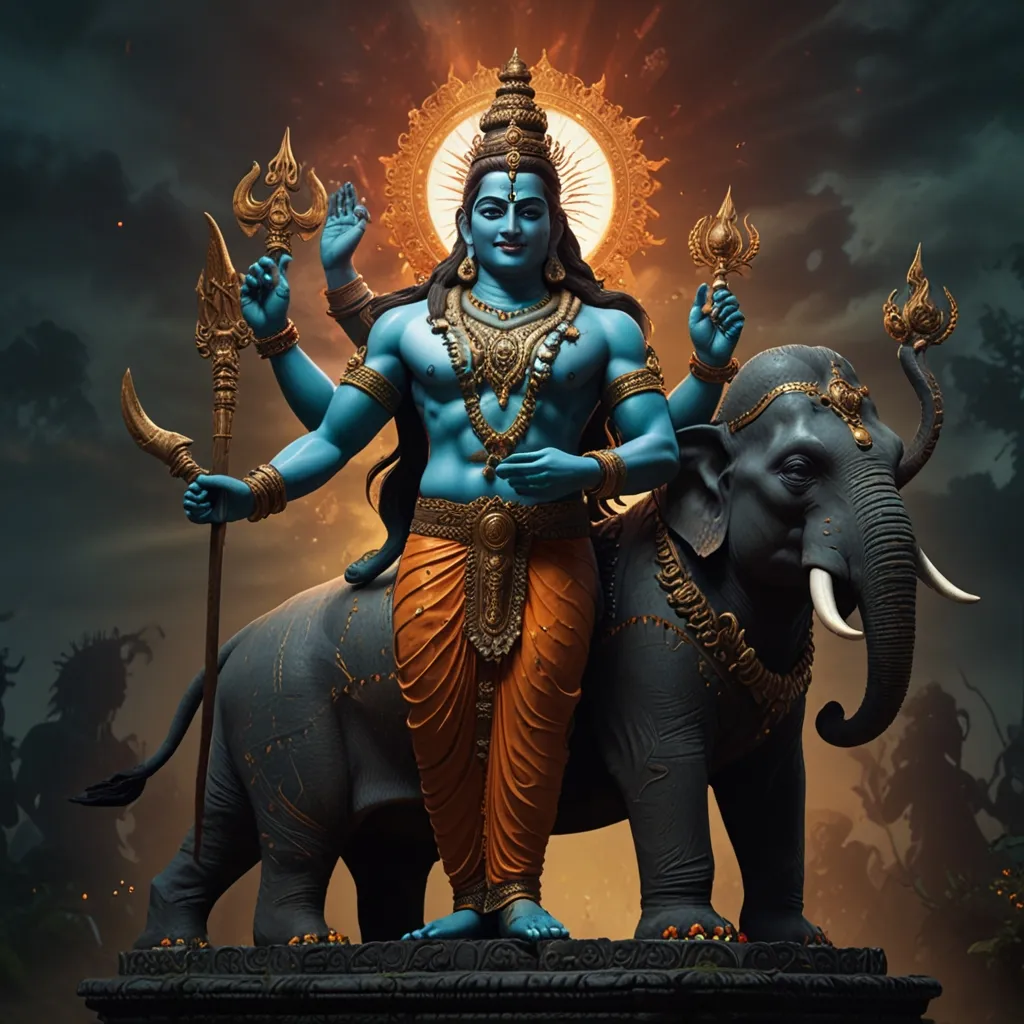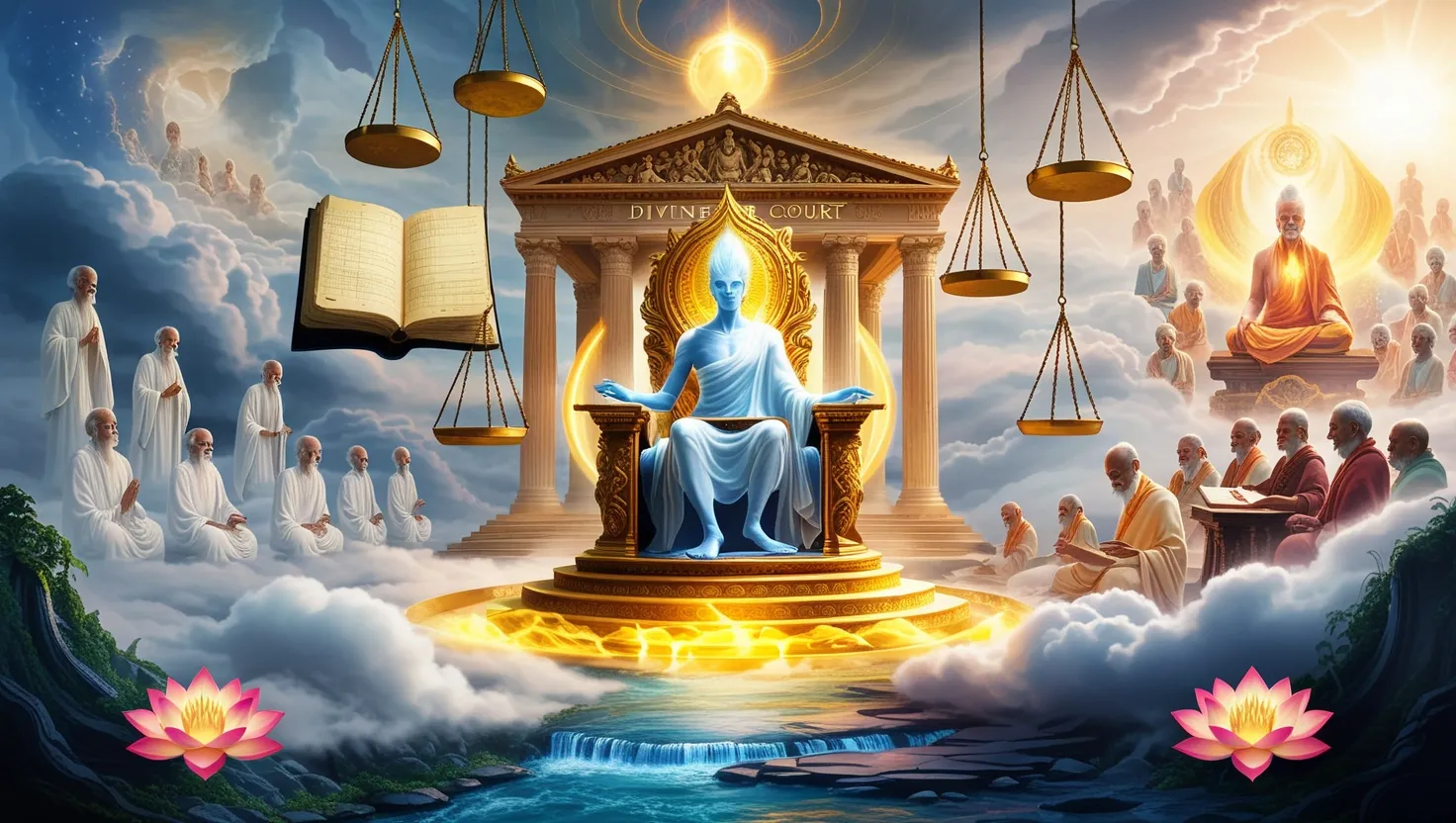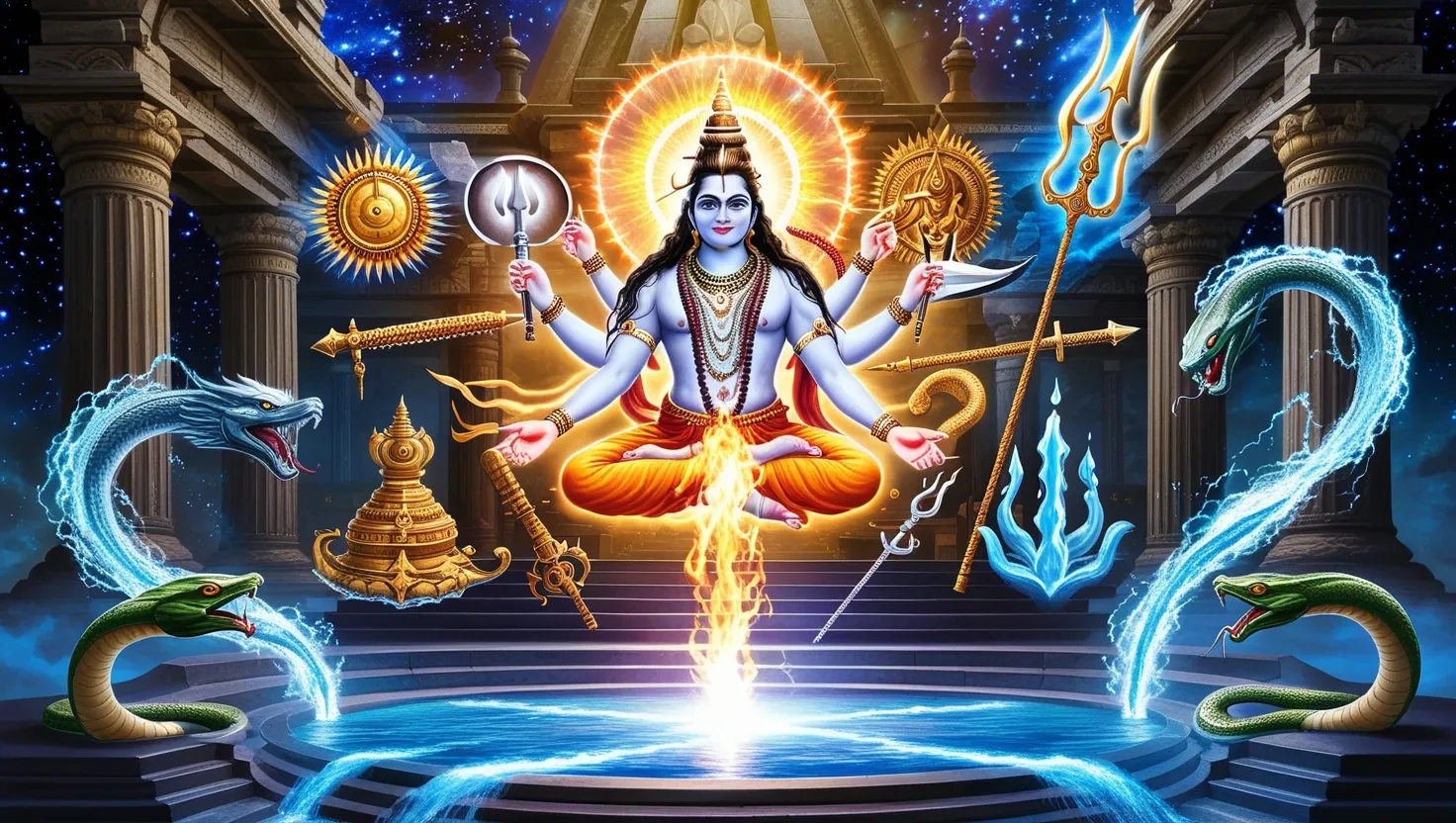In the grand tapestry of Hindu mythology, Shiva stands out as one of the most revered and complex deities. As a part of the holy trinity known as the Trimurti, which also includes Brahma and Vishnu, Shiva plays a multi-faceted role. He’s both the destroyer and creator of the universe, embodying the cyclical nature of existence. This cycle of creation and destruction happens every 2,160,000,000 years, a process in which Shiva topples the universe to lay the ground for a new beginning.
Shiva is often visualized as a great ascetic, absorbed in deep meditation and self-discipline. He is venerated by Yogis and Brahmins and is profoundly associated with the Linga, a symbol of divine energy. The Linga, which symbolizes Shiva’s power and fertility, is a common worship object in temples dedicated to him. His wife Parvati is no less powerful, often incarnating as Kali and Durga. Originally, she was Sati, Daksha’s daughter, who didn’t approve of her marriage to Shiva.
One of Shiva’s most famous stories involves Vasuki, the king of serpents. Vasuki threatened to vomit snake venom across the seas, and Shiva drank this venom, holding it in his palm. This act left a permanent blue scar on his throat, earning him the title Nilakantha, or Blue Throat. This show of self-sacrifice highlighted Shiva’s willingness to protect the world from harm.
Shiva’s mythology is enriched with his association with the bull Nandi. Offered to Shiva by the other gods to calm his anger, Nandi became Shiva’s faithful mount and the protector of all animals. This connection highlights Shiva’s bond with nature and his role as a guardian of the natural world.
His interactions with the sages of the Daru forest are also significant. After Sati’s death, Shiva lived among the rishis, whose wives became enchanted by him. This led the rishis to send a large antelope and a giant tiger against Shiva. After swiftly dealing with these threats, Shiva wore the tiger’s skin as a symbol of his power. The rishis then cursed Shiva’s manhood, which fell off and hit the ground, causing earthquakes. Seeking forgiveness, the rishis were instructed by Shiva to worship the phallus as the symbolic Linga.
Shiva’s role extends in many Hindu texts, filled with countless stories that illustrate his character and teachings. He’s often portrayed as a fierce warrior, a compassionate teacher, and a powerful ascetic. His cosmic dance, the Tandava, symbolizes the cycle of creation and destruction, possessing the power to create and destroy entire universes with a single step.
Beyond mythology, Shiva’s philosophical and spiritual teachings make him revered. Regarded as the Great Yogi, he is considered totally absorbed in himself and the ultimate reality. As Shiva Dakshinamurthi, he teaches the oneness of one’s innermost self with ultimate reality in silent meditation. His teachings emphasize self-realization and the unity of all existence.
Shiva’s divine presence permeates through India, particularly in Varanasi, one of the holiest pilgrimage sites. Varanasi, or Kashi, holds a special place in Shiva’s heart, drawing countless devotees seeking his blessings and enlightenment.
Interestingly, despite his prominence, Shiva isn’t mentioned in the Vedas, the oldest sacred Hindu texts. The Vedas focus more on deities like Indra, Agni, and Varuna. Nevertheless, the concept of Shiva evolved over time, shaped by various tribal deities and the storm god Rudra. The Shvetashvatara Upanishad, following the Vedic texts, lays the foundation of Shaivism, mentioning Shiva as a supreme being.
Shiva’s origins before the Vedas remain shrouded in mystery. Some scholars think he might have been a tribal god worshipped by the earliest inhabitants of the Indus Valley Civilization. This is supported by an Indus Valley seal depicting a figure believed to be a proto-Shiva, known as Pashupati. Over time, Shiva integrated into the Vedic pantheon, connecting himself with Rudra and other Vedic gods, rising to become the supreme being, Parameshwara, the source of all gods and beings.
Shiva’s manifestations are diverse and fascinating. Known as Nataraja, the lord of dance, Bhairava, the fierce one, and Ardhanarishvara, the half-male, half-female deity, Shiva’s representations reflect his multi-dimensional nature. His abode in the Himalayas, Mount Kailash, is considered sacred, drawing devotees from far and wide. The Jyotirlinga, or pillar of fire, symbolizes his divine energy and holds a special place in his worship.
In conclusion, Shiva isn’t just a mythological figure; his significance transcends stories to encompass deep spiritual and philosophical teachings. His dual role as both the destroyer and creator of the universe underlines life’s cyclical nature. Shiva emphasizes self-realization and the unity of all existence. Whether through his mythological tales or spiritual teachings, Shiva remains a crucial figure in Hindu mythology, worshipped and revered by millions worldwide.
